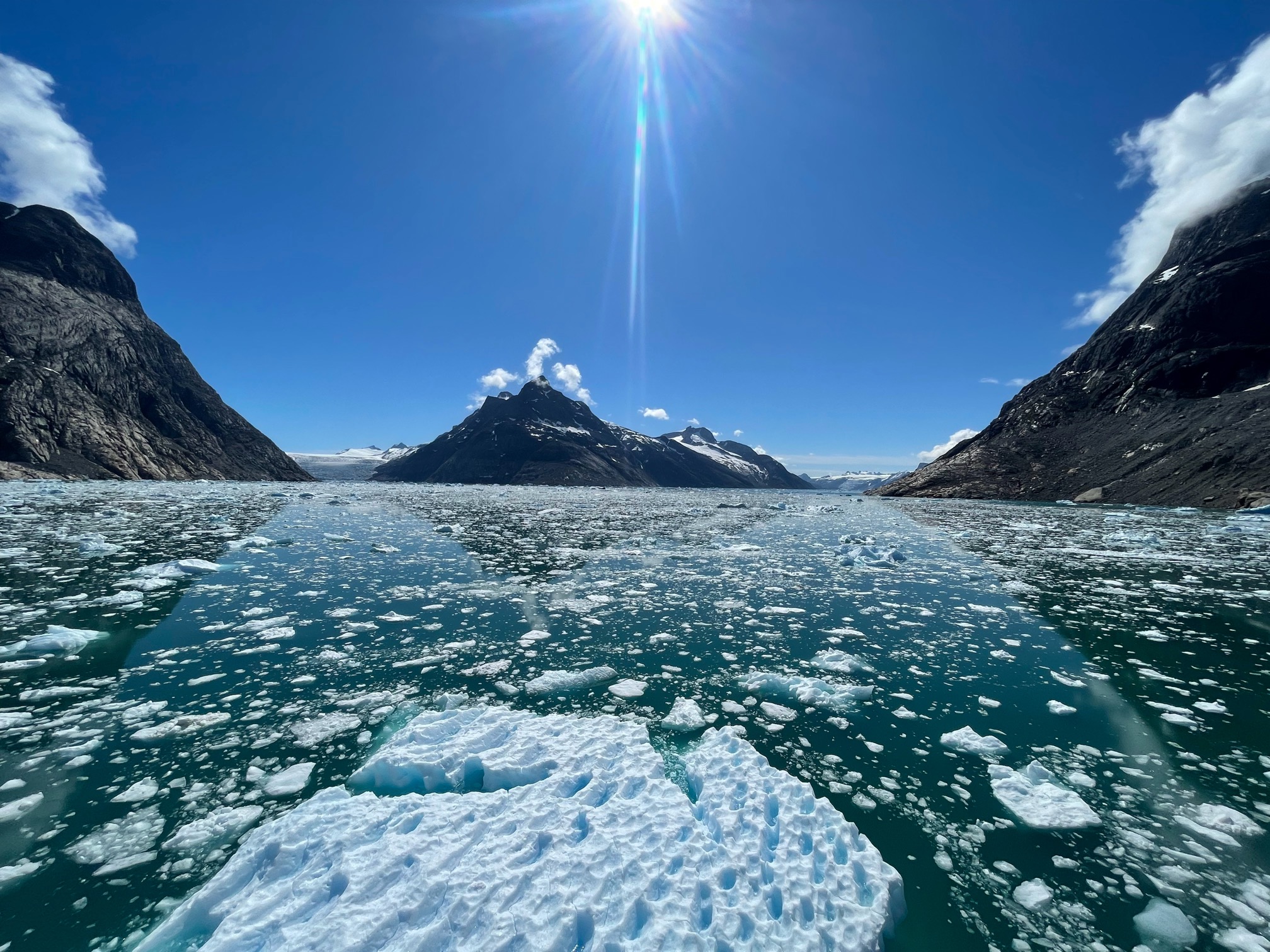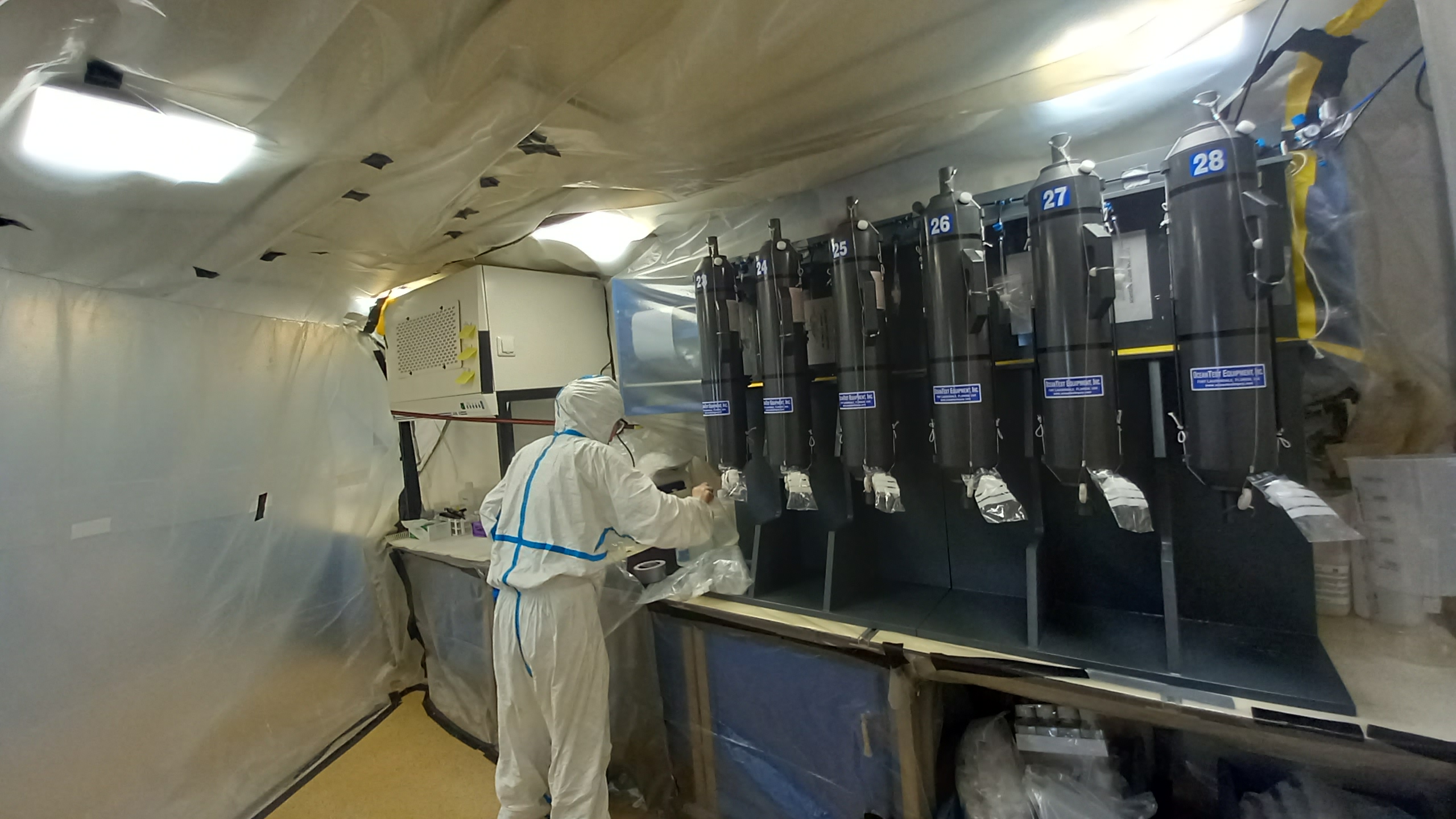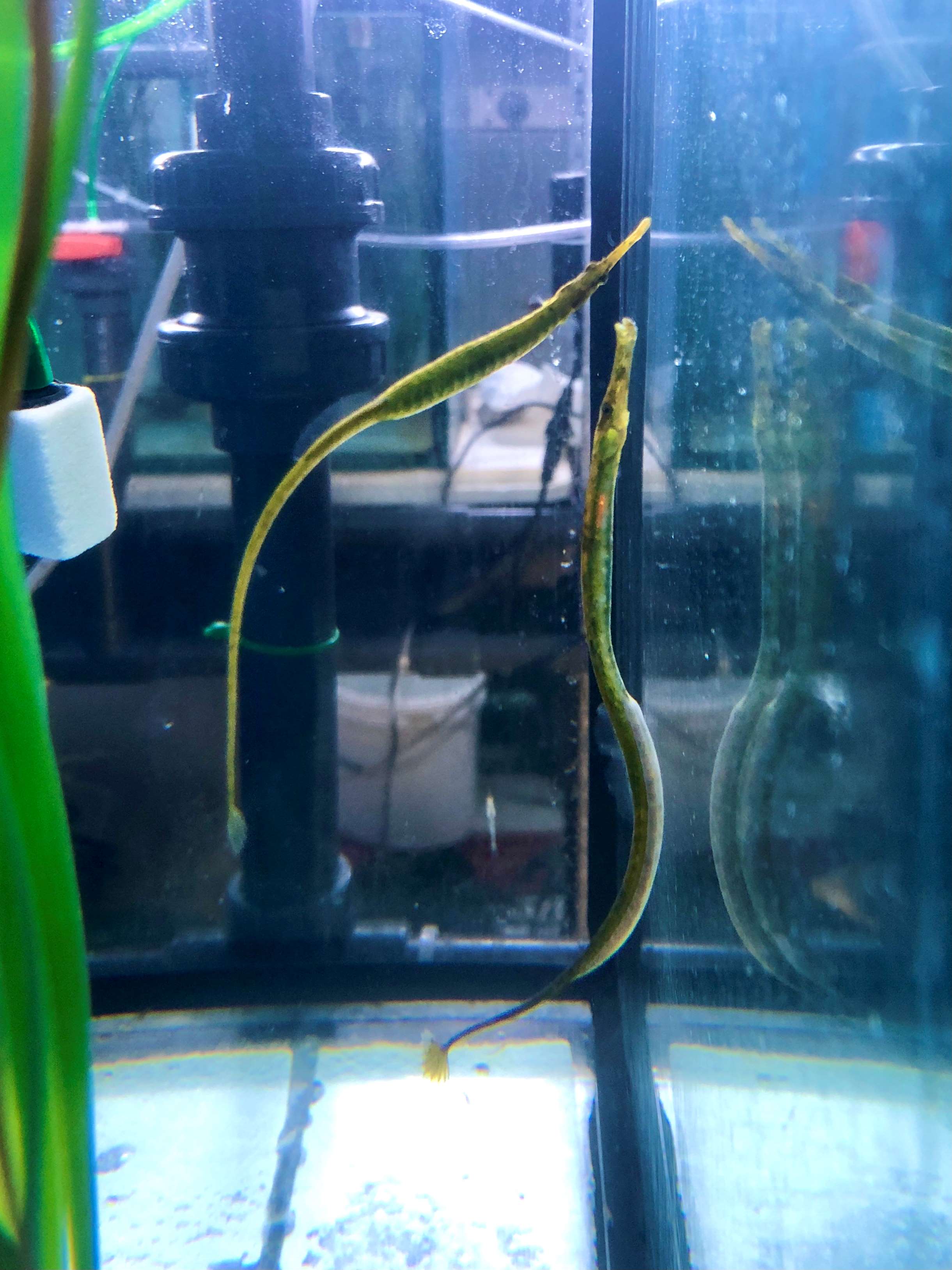You have probably seen photos of icebergs melting in the ocean around Greenland or Antarctica, but did you know that you can hear them too? As the ice melts in the ocean it crackles. Small pockets of air expand as they are heated so bubbles of air in the ice give the bergy bits a […]
A big bubble
When you think of bubbles, you might think of the bath or a bubble tea, but at sea we’re talking about a very different bubble; a “bubble” for trace metals On our first day on board, still in port, we began building our bubble. The bubble is designed for ultra clean trace metal filtration and […]
Meet the science team!
Joining MSM130 are scientists from 5 continents and 9 institutions. There are several teams onboard with many of the scientists working between two teams to deliver novel interdisciplinary science. We’ll introduce these teams to you properly later, but here’s a brief overview of our work at sea (no specific order!). First up, our physical oceanographers […]
Pipefish: Who’s the best dad?
Across the animal kingdom, there is a wide array of ways in which parents care for their offspring. When we think about animals with “good parenting”, we quickly think of close-to-home examples from mammals like ourselves: species in which the female can produce milk to feed her children who stay with their mother for some […]
Ice ahoy!
After two days of a not so comfortable crossing from Iceland to Greenland (a force 7 sea state kept most of us in a state of mild discomfort), we were thrilled this morning to make it to the Greenland shelf where the weather is much more pleasant! We’ve already filmed some seals having a leisurely […]
Greetings from Geomar’s coring team :)
Hello from the tip of Greenland. After two days of semi-smooth sailing, we saw Greenland for the first time this morning and reached the southernmost point of our cruise. From now on, it’s only getting colder, the days are getting longer, and the work gets harder:) To recap on the last three days: we set […]
My First time to Experiment in the ocean!
Hello, my name is Xuewei Jin, and I’m a master’s student from Shanghai Jiaotong University. What a crazy thing to be able to participate in the Maria S. Merian cruise to collect seawater samples along the Greenlandic coastline and in unsurveyed east Greenland fjords! The research expedition Polar Beast is my first international science experince […]
From India to China, from China to Iceland
Hi from somewhere a few hours west of Iceland! I’m Apsara P. Vijayan, a chemical Oceanographer from India. I am so excited to participate in the research expedition POLAR BEAST, organized by the GEOMAR-Helmholtz Centre for Ocean Research. This will be my third ocean expedition, my first time in the polar ocean, and my first […]
Going to sea for the first time!
So, this is the first time I could take part in a research cruise, everything is so ‘fresh’ for me. We departed from university campus in Shenzhen 3 days ago, crossing from mainland China to Hongkong on July 06th, then flew to Iceland via Germany. It took us two days in to arrive in Reykjavík. […]
Die dunkle Seite der Eisberge
English version below Die letzte Woche unserer Expedition ist angebrochen und wir haben die Labradorsee in Richtung Osten verlassen. Die verbleibenden Tage werden wir mit Messungen der CTD-Rosette verbringen. Sie besteht aus einem Kranz von Flaschen, mit denen wir Wasserproben nehmen können und zusätzlichen Messgeräten, die darunter angebracht sind. Die eigentliche CTD (die Abkürzung steht […]


